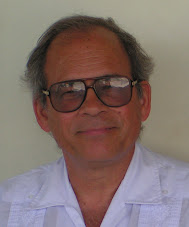Likeability Is not a Necessary  Qualification for Leadership. A New Year is about to begin.
Qualification for Leadership. A New Year is about to begin.
The Chief Minister is in a quandary. He established a committee to advise him and to assist government in negotiating constitutional advance with the British. The committee has presented him with a problem. He cannot get all the members to agree with each other on the way forward. He has two different streams of advice coming out of the committee. They are irreconcilable.
There has been public  discussion on the various constitutional issues for the past several years. Some members of the committee contend that a consensus has emerged. They say that that consensus is embodied in the Report of the Constitutional and Electoral Reform Commission delivered to government in August 2006. They believe that this Report contains the true voice of the Anguillians. However, not every Anguillian contributed to the discussions and to the eventual Report. There were some who “boycotted” the process. They form the second group in the Chief Minister’s committee. They argued at the time the Commission did its work to the effect that it was the responsibility of the British under various United Nations resolutions to educate the people of the Overseas Territory on the options open to them for Constitutional advance. This group argued that until the British had discharged this “duty”, Anguillians would be incapable of knowing what they really wanted in terms of Constitutional advance. They insisted that we must first go through a process of being educated by the British before we could sensibly make up our minds. No one would have a problem with the proposition that we should educate ourselves. The problem most of us had was that it was said that it was the responsibility of someone else, the British government, to do the educating for us! This group claims that the Report does not represent the true vision of the Anguillians for Constitutional reform. They insist that any reform process based on the Report is flawed. They demand that the reform process begin all over again. They waited until the process of consultation and drafting of the Report was completed. Then, they put the spanner in the works. They refused to accept the Report as the basis for going forward with reform. They have gone further. They insist that the only way that we will know if Anguillians are in favour of any proposed constitutional advance is if there is a referendum.
discussion on the various constitutional issues for the past several years. Some members of the committee contend that a consensus has emerged. They say that that consensus is embodied in the Report of the Constitutional and Electoral Reform Commission delivered to government in August 2006. They believe that this Report contains the true voice of the Anguillians. However, not every Anguillian contributed to the discussions and to the eventual Report. There were some who “boycotted” the process. They form the second group in the Chief Minister’s committee. They argued at the time the Commission did its work to the effect that it was the responsibility of the British under various United Nations resolutions to educate the people of the Overseas Territory on the options open to them for Constitutional advance. This group argued that until the British had discharged this “duty”, Anguillians would be incapable of knowing what they really wanted in terms of Constitutional advance. They insisted that we must first go through a process of being educated by the British before we could sensibly make up our minds. No one would have a problem with the proposition that we should educate ourselves. The problem most of us had was that it was said that it was the responsibility of someone else, the British government, to do the educating for us! This group claims that the Report does not represent the true vision of the Anguillians for Constitutional reform. They insist that any reform process based on the Report is flawed. They demand that the reform process begin all over again. They waited until the process of consultation and drafting of the Report was completed. Then, they put the spanner in the works. They refused to accept the Report as the basis for going forward with reform. They have gone further. They insist that the only way that we will know if Anguillians are in favour of any proposed constitutional advance is if there is a referendum.
The two groups will never agree. They are not capable of coming to a consensus. Someone has to cut the proverbial knot. It will be a demonstration of leadership when those who must lead finish listening to the two contending streams of advice, and then come to a decision on how best to proceed. The decision when taken will not please everyone. Some will be happy with it. There will be others who will be upset. That is one of the responsibilities of leadership!
Should a leader want to be liked? Yes, of course. We all want to be liked. None of us wants to be disliked. But, should a leader abdicate leadership because he is not sure whether what he decides on will be appreciated? Does one show leadership when one puts off taking a decision because one does not have consensus? Does a real leader duck the responsibility of leading the way until he has everyone agreeing on the same direction? Does the helmsman seek consensus and approval from the rowers?
To ask the question is to provide the answer. A good leader will study the issue carefully. The leader will take advice from persons who are pro and from those who are con. A good leader will not demand consensus among his advisers. The real leader asks for a variety of opinions. The real leader does not fail to take a decision because the decision will not be approved by some. That is to abdicate leadership. We know real leadership when we see it. It is shown by the person who goes out in front and says, “Follow me”. It is shown by the person who takes a stand, based on principle, and summonses the followers to the cause.
Who likes it is a question asked by the politician. The statesman does not even consider asking the question.
Or, as my late Dad used to say, “Who vexed, lose!”





























